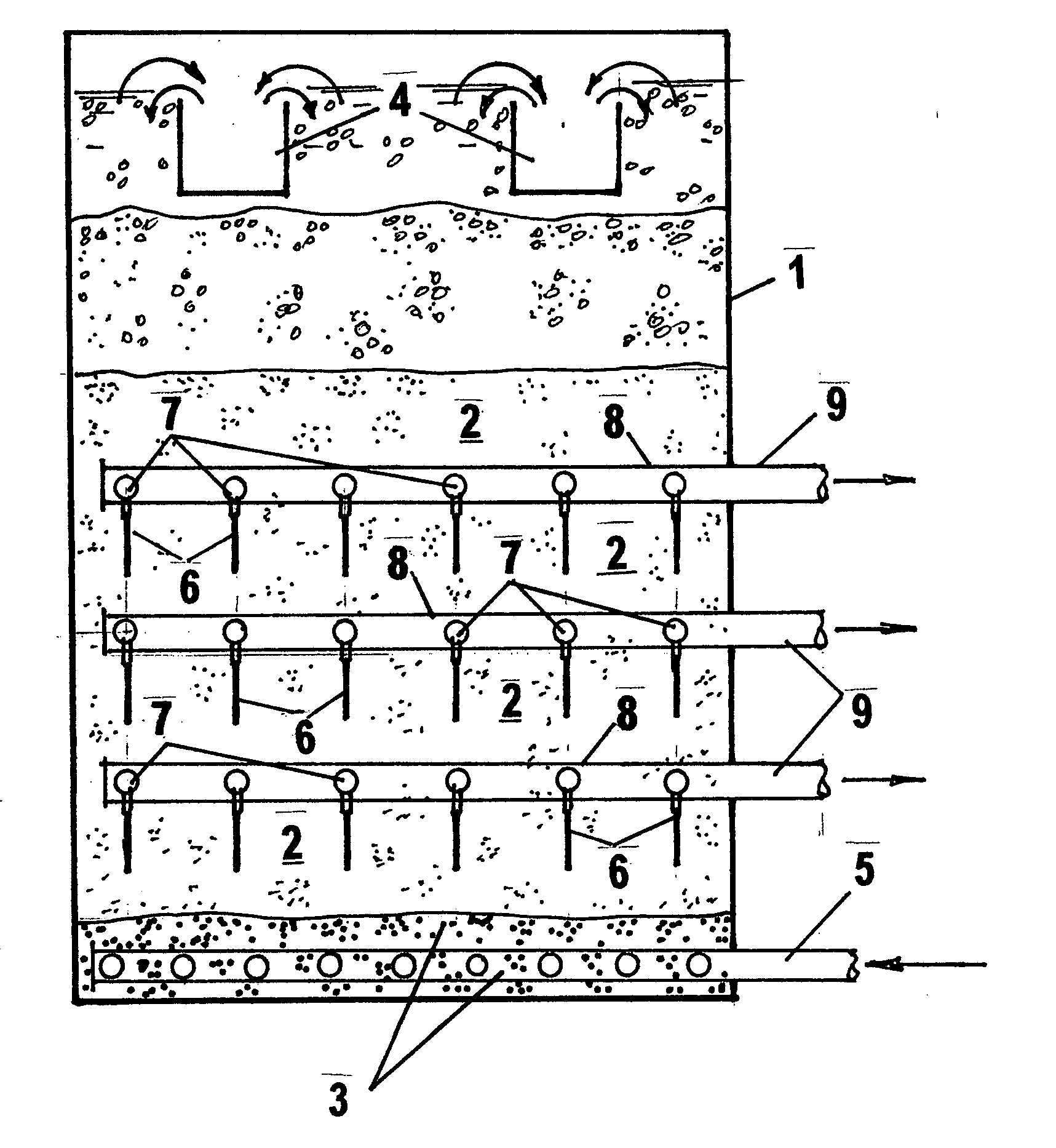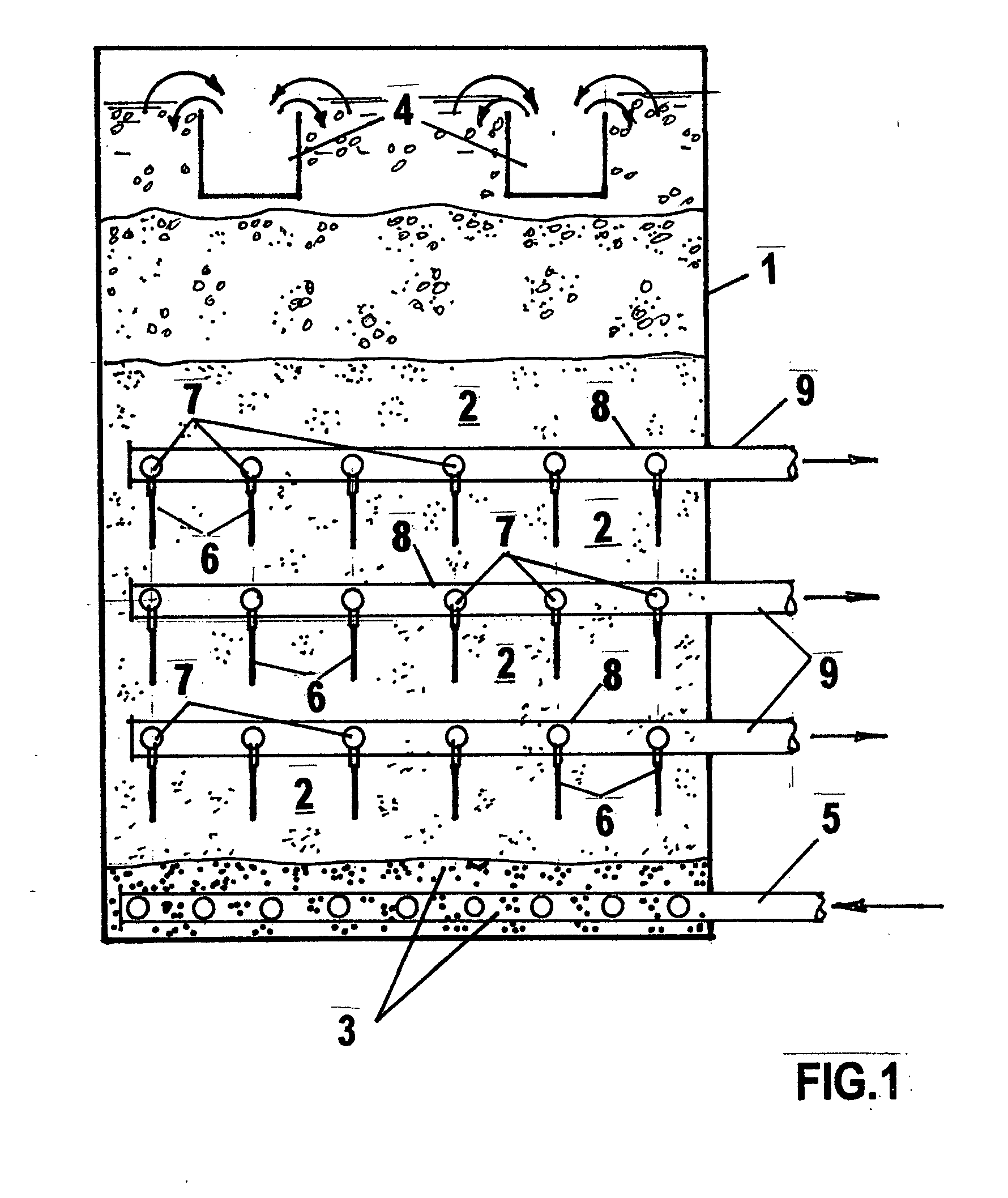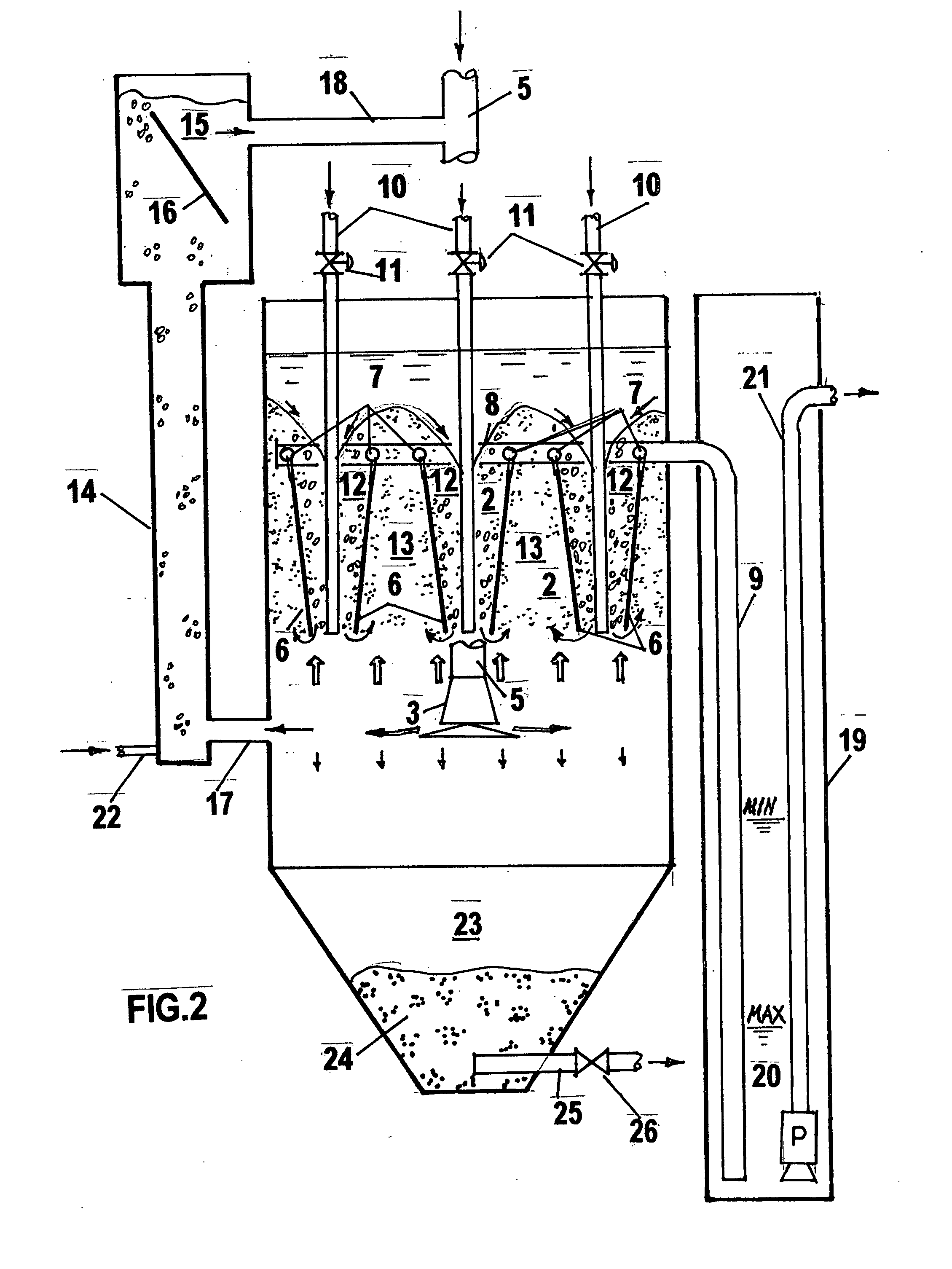Method for water filtration
a water filtration and liquid technology, applied in the direction of multi-stage water/sewage treatment, membranes, separation processes, etc., can solve the problems of large quantity of backwashing water, low “dirt capacity” of fine media, and frequent backwashing, so as to improve the performance of the deep bed, improve the effect of hydraulic resistance and greater control over water flow distribution
- Summary
- Abstract
- Description
- Claims
- Application Information
AI Technical Summary
Benefits of technology
Problems solved by technology
Method used
Image
Examples
Embodiment Construction
[0041]FIG. 1 is an elevation of a modified rapid filter converted into combined deep bed—membrane media filter. It is understood that a similarly designed new combined deep-\bed—membrane media units can also be used. Such filters would consist of a tank 1 with preferably coarse media 2 (although, other media can be justified for particular applications), an existing underdrain system 3 and troughs 4 for colleting spent backwash water and for feeding raw water for filtration. Underdrain system is connected to pipe 5 that in non-modified filter would be used for collecting the filtrate and for feeding backwash water. In modified filters, pipes 5 are used for feeding raw water for filtration and for feeding also raw water at a greater flow rate for backwash. In drinking water supplies, the backwash water is the treated filtrate. Piping for feeding raw water to and evacuating spent backwash water from troughs 4 is not shown in FIG. 1, however, these piping is known to skilled artisans. ...
PUM
| Property | Measurement | Unit |
|---|---|---|
| Fraction | aaaaa | aaaaa |
| Fraction | aaaaa | aaaaa |
| Time | aaaaa | aaaaa |
Abstract
Description
Claims
Application Information
 Login to View More
Login to View More - R&D
- Intellectual Property
- Life Sciences
- Materials
- Tech Scout
- Unparalleled Data Quality
- Higher Quality Content
- 60% Fewer Hallucinations
Browse by: Latest US Patents, China's latest patents, Technical Efficacy Thesaurus, Application Domain, Technology Topic, Popular Technical Reports.
© 2025 PatSnap. All rights reserved.Legal|Privacy policy|Modern Slavery Act Transparency Statement|Sitemap|About US| Contact US: help@patsnap.com



